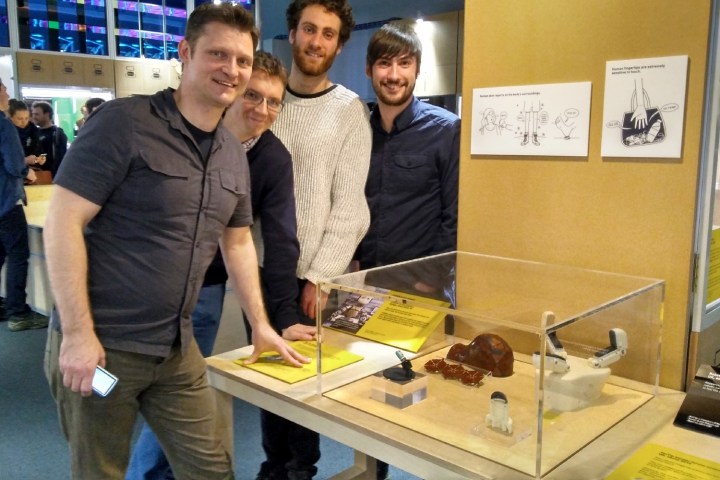
A laboratory at the U.K.’s University of Bristol is thinking a bit smaller than that — although their macro goal is as big as anything currently happening in the robotics world.
Led by Dr. Nathan Lepora, the Bristol Robotics Laboratory is currently at the start of a five-year research project to build a 3D-printed robotic hand with a realistic sense of touch. According to Lepora, after five years they hope to have a robot hand that is capable of doing everything our own hands can do: From dexterous movement to touch-based perception.
“If a robot has human abilities in terms of interacting with the world, it can take on any of the disciplines that right now require human manual labor,” Lepora told Digital Trends. “That could be anything from caregiving, such as handling patients in hospitals or nursing homes, to manufacturing lines, where people are still doing a lot of the assembly work. You could even bring about that long-term dream of the home robot that follows around after you, tidying up. There’s a whole spectrum of different use-cases we could explore if robots had the dexterity and manual abilities to do them.”
The research is being sponsored to the tune of $1.25 million and draws on experts from fields like neuroscience and psychology, as well as engineering.
Already, the team has built creations like TacTip, an open-source 3D-printed fingertip which won Harvard University’s International Soft Robotics Competition and is currently on display at London’s Science Museum. TacTip is made up of a webcam that is mounted in a 3D-printed soft fingertip which tracks internal pins, designed to act like the touch receptors in human fingertips.
“The other part of what we’re doing as a lab is to develop the algorithms that will make this possible,” Lepora continued. “To use a tactile 3D-printed hand, you need to have the software to interpret its sense of touch, and the data that comes off its tactile sensors, and then to use that information to control the hand.”
Half a decade to build a robotic version of the human hand, which evolved over many millions of years, is certainly a tall order — but Leopora sounds confident.
“What we wind up with may not look exactly like a human hand,” he said. “It may have three fingers, for instance. But it’ll be a 3D-printed robot hand with comparable abilities to our hands. In tandem with artificial intelligence algorithms, it will be able to interact with the world with comparable capabilities to our own. That’s the goal. Everything we do is about bringing that goal closer.”


